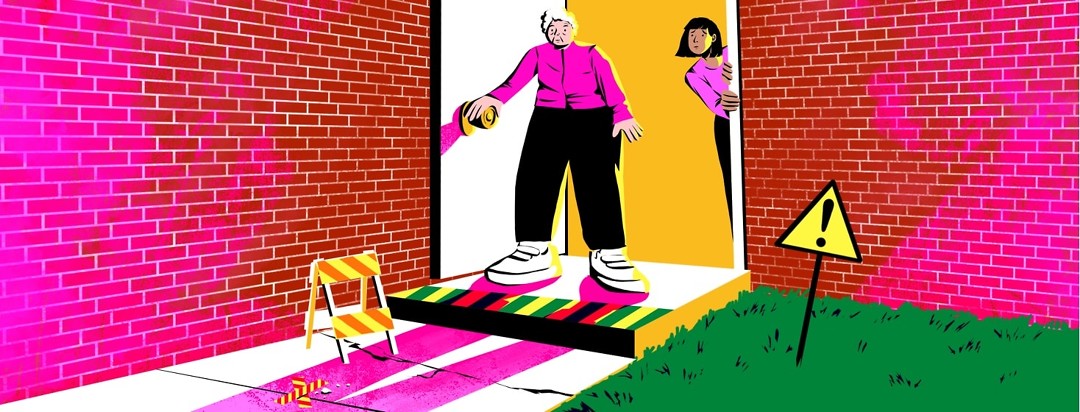Fall Avoidance for Low Vision People (Part 1)
Have you ever fallen due to a result of your less than perfect vision? I have, and later in this article I will explain the where’s and whys of my incident.
Have you ever fallen due to low vision symptoms?
Recently the editors of MacularDegeneration.net polled our site members on the subject of falls. I found it very interesting and thought-provoking. The title of the poll was “Have you or your loved one ever fallen due to low vision symptoms?” As of mid-January, it had reached 926 people and had more than 29 responses. Later in this article, I will include some of your responses.
Tips for preventing falls at home
Senior care experts offer the following advice for preventing falls at home.1
- Clean up clutter.
- Repair or remove tripping hazards.
- Install grab bars and handrails.
- Avoid wearing loose clothing.
- Light it right. (That’s kind of clever)
- Wear shoes.
- Make it nonslip.
- Live on one level.
- Move more carefully. (Slow is smooth and smooth is fast.)
Rapidly declining vision
Those are some pretty good suggestions to “trip proof” your home and at least help we VIPs as we bobble about. Honestly, I never thought I would be writing an article about having low vision and suffering falls. Who did? AMD started for me 9 years ago, dry in one eye and wet in the other. Over the course of the last 9 years, my vision was in a state of stasis, it didn’t decline much at all. My version of normal was pretty much 20/30 in my dry eye and 20/40 or so in the wet one. And it stayed like that for the better part of 9 years. However, just in the last few months, my vision has started to decline rapidly.
Dry AMD eye has advanced to geographic atrophy
What happened, you ask? Well, my dry AMD eye has gone into geographic atrophy (GA) and it recently tested at 20/200 (legally blind!). A reminder is in order here, it means my central vision only! I tested this way in a dark exam room trying to read the eye chart. If I had to explain it, it’s like looking through a spyglass with an invisible spot right in the middle. I could not see the letters with my left eye at all, even if I moved my head left to right or up and down. Peripherally it’s still very good. And, my right eye with wet, tested at 20/40. So, I’m still in play and can still fully participate, sans night driving.
How am I altering my life to adjust to this progression?
- Driving. Only in my hood, which I know like the back of my hand. No more night or even twilight driving for me.
- Do things like going up and down stairs more slowly and carefully. (Slow is smooth and smooth is fast.)
- I won’t be able to perform brain surgery or fly supersonic fighter jets anymore. (JK... I never could anyway.)
Read Part 2 of this article here.
Editor's Note: As of August 2023, 2 drugs known as complement inhibitors — Syfovre® and Izervay™ — have been approved by the US Food and Drug Administration (FDA) to treat geographic atrophy (GA).

Join the conversation